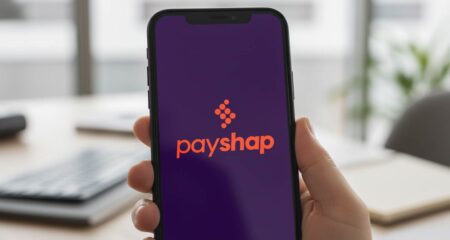
BankservAfrica, the automated clearing house responsible for South Africa’s PayShap platform, has launched a “payment corridor” that facilitates the clearance of payments between South Africa and Zambia in just 60 seconds.
The corridor uses the Transactions Cleared on an Immediate Basis (TCIB) platform, which is built and maintained by BankservAfrica in partnership with the SADC Payment System Oversight Committee and the SADC Banking Association.
Other SADC payment corridors, including between Zimbabwe and South Africa, will follow soon.
Similar to Payshap, TCIB allows financial institutions to use its infrastructure to deliver instant payment solutions to end users. Additionally, TCIB has the ability to onboard financial institutions other than banks to facilitate bank-to-bank, wallet-to-wallet and bank-to-wallet (or vice versa) transactions.
“TCIB is an open-loop, cross-domain, interoperable payments platform with more than 50 members from 11 countries in the SADC region,” said Ruhling Herbst, executive head of Africa business at BankservAfrica in an interview with TechCentral.
“We are the creating an enabling platform that allows businesses to go out there and reach customers they couldn’t reach before.”
From a policy perspective, TCIB is part of a regional initiative to improve intra-regional trade within SADC in support of a free trade area. The South Africa-Zambia corridor is the second to go live after the Botswana-Namibia corridor which, according to Herbst, was more of a “testing ground”.
Real-time payments
The prioritisation of the South Africa-Zambia corridor was motivated by BankServAfrica’s observations of the remittance market. “Even though most of the volumes are between South Africa and Zimbabwe, we found that sending money to and from Zambia is the most expensive in the entire region,” said Herbst.
According to Herbst, by building the infrastructure required for real-time cross-border payments, BankServAfrica removes that burden from financial institutions that would have to build separate individual channels and then work those costs into their pricing, which disadvantages consumers.
TCS | PayShap: the fintech revolution coming to SA’s payments system
BankServAfrica’s aim, he said, is to reduce the cost of sending money across SADC by taking advantage of economies of scale to provide a platform that any authorised financial institution can join. To finance the project, however, the organisation has to rely on a number of partnerships from the public and private sectors.
“In terms of setting up the infrastructure, we have been privileged in receiving sponsorship from the World Bank as well as some commercial funders such as the Bill & Melinda Gates Foundation, the International Fund for Agricultural Development and AfricaNenda. This allows us to subsidise the growth of the platform, making it cheaper for the financial institutions from the various countries to join,” said Herbst.
 But building cross-functional interoperability between different financial jurisdictions has been no easy feat. For the TCIB vision to be realised, the various regulatory bodies across the SADC region had to be consulted to better coordinate the rules governing financial transactions in all jurisdictions. One example of this is the alignment of balance of payment (“BoP”) codes across the region to have all financial institutions working from the same guidelines. BoP codes are used to provide a reason for international payments, and examples include import payments (103), inheritance (409) and gifts (401).
But building cross-functional interoperability between different financial jurisdictions has been no easy feat. For the TCIB vision to be realised, the various regulatory bodies across the SADC region had to be consulted to better coordinate the rules governing financial transactions in all jurisdictions. One example of this is the alignment of balance of payment (“BoP”) codes across the region to have all financial institutions working from the same guidelines. BoP codes are used to provide a reason for international payments, and examples include import payments (103), inheritance (409) and gifts (401).
Now that the platform has gone live, Herbst explained, the data aggregated from the transactions on the system will give policymakers insight into the needs of consumers on the ground and help them make high-level decisions based on real data, as opposed to the current perspective that only has sight of the flow of money through formal channels such as the banks.
TCIB is designed for “small” payments with a limit of US$350/transaction. Two of the financial institutions onboarded and transacting on the system are fintech start-ups Sampay and SendHome. Using SendHome, a Zambian working in South Africa can now send money to family back home at the cost of 3%/transaction, meaning that sending R1 000 costs R30. With the addition of more service providers, BankservAfrica predicts prices will continue to decline.
The next corridor to go live will be “in the next two weeks”, Herbst said, and it is likely to be between South Africa and Zimbabwe. Full regional integration is expected by the end of 2025.
Although small-scale retailers are permitted to use the platform to expand their regional reach, separate retail functionality for large-scale retailers is also in the pipeline.
Read: Stephen Linnell is the new BankservAfrica CEO
“We’re going to start seeing the snowball effects now. The complexities have been knocked out of the way and now everybody is in partnership with everybody. All of a sudden we have multiple endpoints in multiple geographies,” said Herbst. – © 2024 NewsCentral Media




